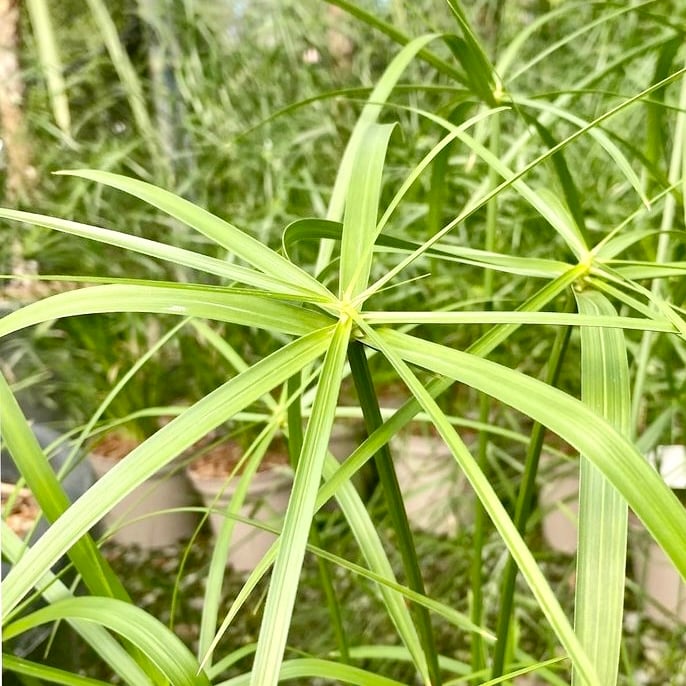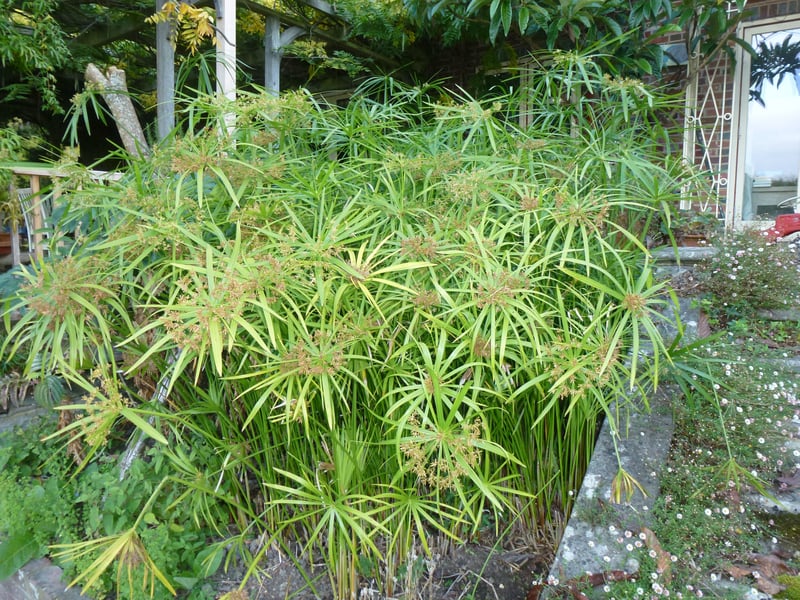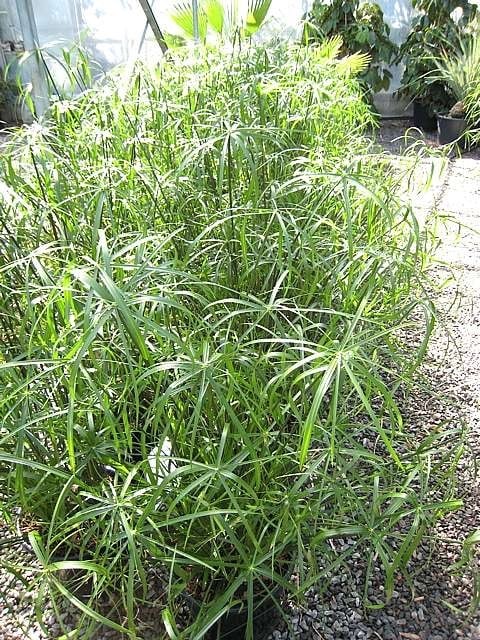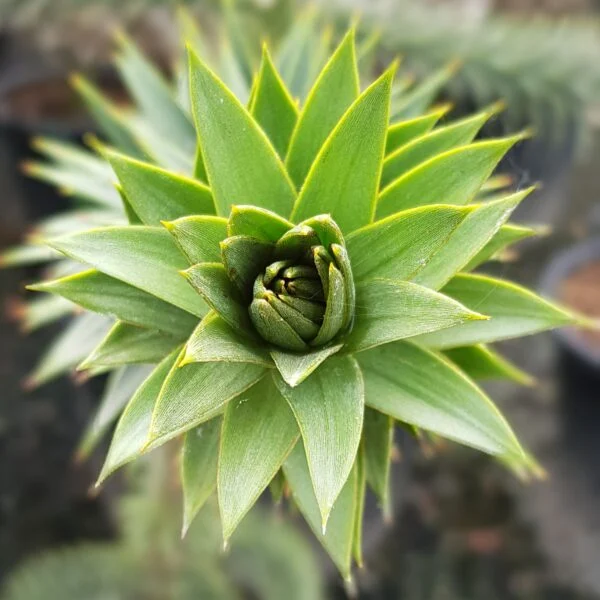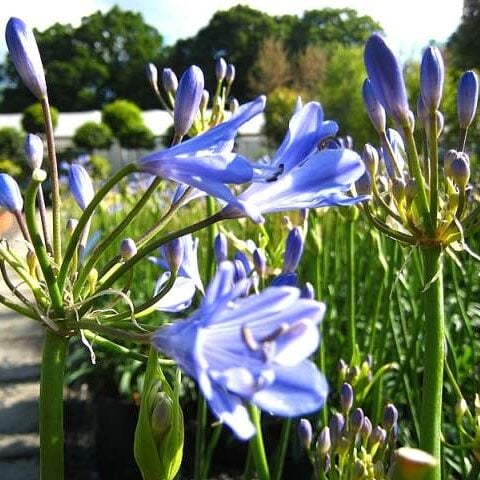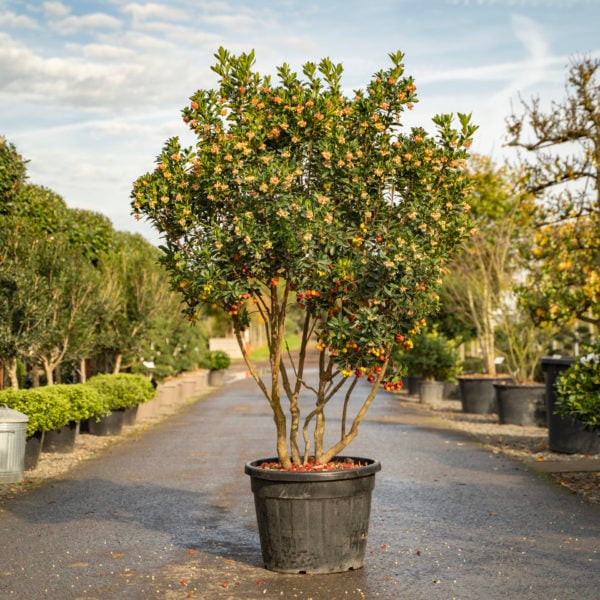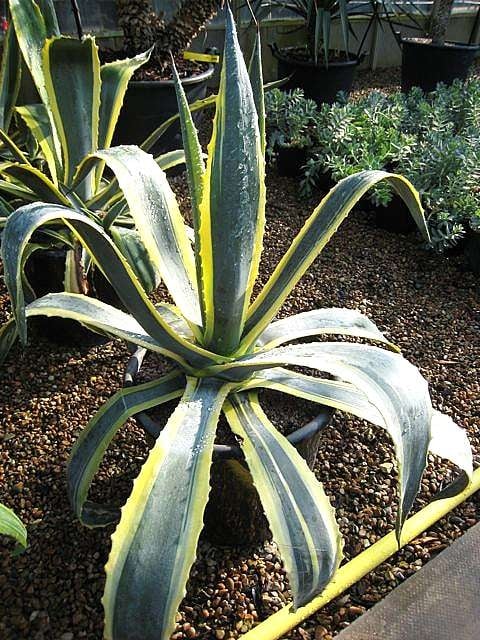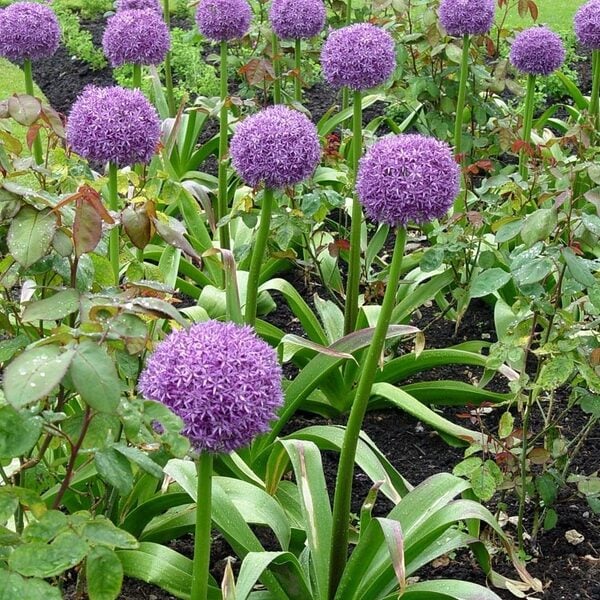Cyperus alternifolius (Dwarf Papyrus)
Mini Papyrus – to 4ft. Thickets of miniature palm trees. Reputedly tender but not in our experience. Dies down in winter but always returns. Good in a pot. Easy plant. Please contact us for stock availability and sizes.

Hardiness level Amber
Dwarf Papyrus is native to Madagascar so how it thrives in the ground in my chilly Sussex garden is a bit of a mystery - but thrive, it does. It's on a raised bank and dies down in winter with the frost but always returns in the spring as happy as ever. We always enjoy turning various orthodoxies on their head. This plant is usually thought of as growing in sub tropical water margins and therefore needs to be kept in a conservatory in a pot in the winter. That's funny - outside in Sussex in a raised bed with no obvious water margin anywhere near, seems to work fine. It does need light and is fine in a pot but it needs a big pot to do best. Insufficient light and it droops - thin and bendy. Not very good. It always benefits from a bit of cosmetic work - removal of old, dead, dying and bent bits makes a world of difference.
Probably a reckless comment, but this never seems to get any pests or diseases.
These are related to the proper Papyrus that grows by the Nile that they used to make paper out of. Many years ago we used to sell it as a conservatory plant but it really won't take frost and as we decided many years ago that heating greenhouses was officially loony so unfortunately we don't do it anymore. A shame as it's a fantastic conservatory plant - dramatic and easy. We were brought up with the bible story of 'Moses in the bulrushes'; a wonderful bit of linguistic imperialism. Whether Moses ever even existed or not, he was meant to come from Egypt. Papyrus grows by the river Nile. Bulrushes grow round ponds in the English Home counties. Wherever the baby Moses was found, I bet it wasn't by a pond in Stoke Poges. STOP PRESS : yes we do sell it - but only in the summer.
Propagated by us from cuttings.
Additional Information |
|
|---|---|
| Soil Type | Clay, Dry / Well Drained, Soggy /Damp (Plant high and you can get away with murder) |
| Light | |
| Plant Type | |
| Continent of Origin | |
| Specialist Plants | Aquatics & Marginals, Grown by Us, House Plants/ Indoor Plants, Mediterranean, Rare & Unusual (Collectables) |
| Features | |
| Situation | Coastal, Conservatories, Mild City Gardens, Plants for Pots, Sheltered Garden |
| Flower Colour | |
| Hardiness | |




